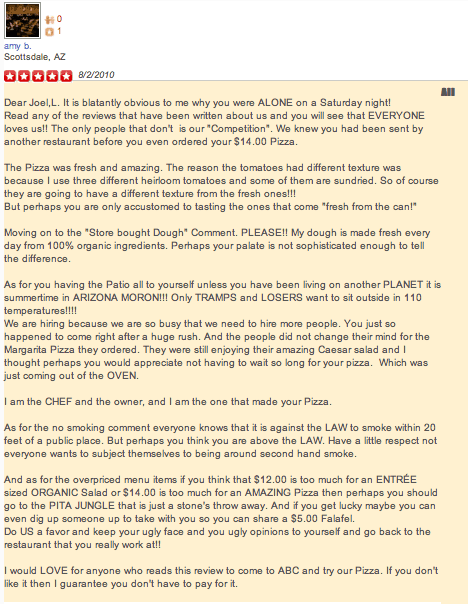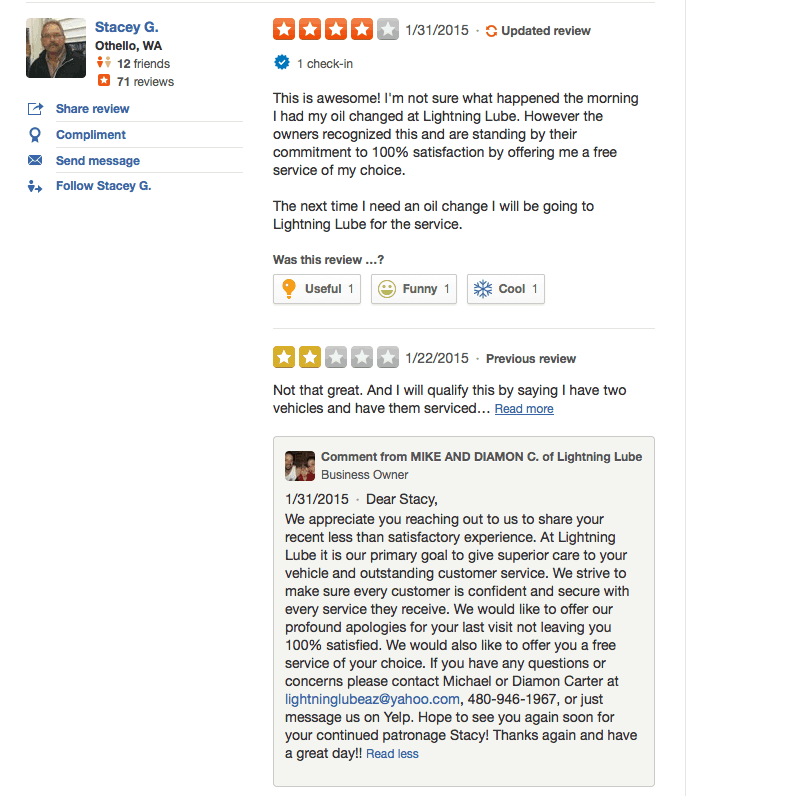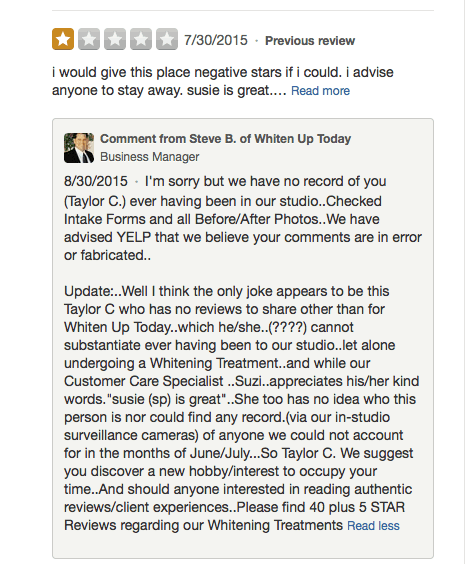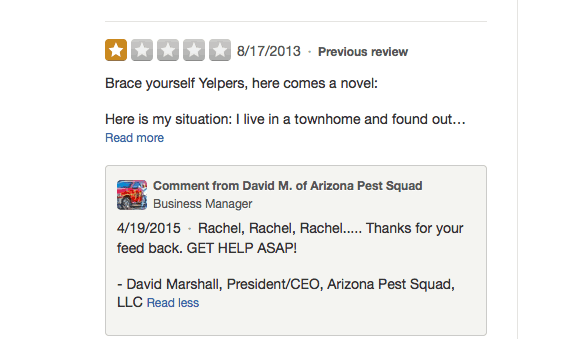
You’ve poured time and money, as well as your heart and soul into your business, so it’s understandable to be hurt when someone casually dismisses your efforts or seems unimpressed by your dedication.
It becomes even more challenging when it goes beyond just that one customer who seemingly didn’t care; especially when that customer has a strong enough opinion to want to share it with the online world, in hopes to permanently discourage other strangers from giving you a chance.
It’s frustrating, no doubt. Why? Because studies show that potential customers will check for online ratings and reviews before purchasing from a local business. Understandably, you don’t want the first thing they see to be criticism of your business, but what can you do?
What Negative Reviews Look Like
Get Blog Updates
As I’ve said before, it helps if you don’t suck. If your business is genuinely good, negative reviews shouldn’t happen very often, and thankfully, most people look at and factor online reviews with a grain of salt.
When your business is doing well, it’s in your best interest to encourage real reviews from your delighted customers. Don’t just rest on your laurels, though; many prospective customers will value your negative reviews the most, using those as a frame of reference for a possible worst-case scenario.
If two businesses have a similar amount of reviews, take a closer look at the content for the negative ones. They can tell you a lot. We have a pretty good idea of what a 5-star review will say, don’t we? Do all of the negative reviews saying essentially the same thing? Even if there are relatively few negative reviews, they may all point to a common problem.
Our advice is this: you should attempt to respond to every online negative and do so in a timely fashion.
How to Respond
There are tons of programs and software that can help screen for negative reviews (we have a suggestion, btw). These can lighten the daily load so you use your time efficiently, bringing the reviews to you so that you don’t have to go out looking for them. You can also look into Google alerts.
When you do come across a negative review, there are some best practices you should follow:
Step 1: Remain Calm
Try not to respond immediately, if you’re angry. Take a timeout so you don’t respond emotionally. Negative reviews might get you riled up a bit, after all, it could hurt your business, and it’s just some dude on the internet with an opinion, and yet somehow it matters. You might be tempted to lash out in the same manner that they did, but don’t.
YOU might understand the reviewer is an unfair troglodyte that should never have been born, but to outsiders, it might not look that way. Just look below at this example:

Step 2. When Necessary, Respond in Private
You should make sure you have access to your Google business pages, Facebook, Yelp, and any other locally relevant review sites. Also, your initial response should be done in private. Introducing yourself and thank them for their review. Apologize or their negative experience and acknowledge their pain-points. As a general guide, you should refrain from being defensive and accusatory. Swallow your pride on this one, buddy.

Attempt to remedy the issue and invite them to return. If you do this well enough, they may even adjust their review down the road.
Step 3. When You Respond Publicly
A polite and public response is a great opportunity to demonstrate your level of customer service. Pretty much every consumer understands that sometimes things don’t go as planned.
If your private outreach hasn’t been effective, then it is smart to publicly acknowledge their experience and demonstrate your attempts to correct the issue(s). Be generous, apologetic, and cautious. While you do want to correct any misinformation that is in the review, don’t use this as an opportunity to “tell your side of the story.” Look at this example below and consider how it would make you feel as a customer looking at reviews.

Or this one…

Most business owners don’t take the time to respond to online reviews, which can hurt your business’s reputation. It allows for one-sided conversations, and the only side to be heard is the angry customer’s. Additionally, it denies potential patrons the chance to witness your customer service in action. So, take control of your online reputation.
Original featured image courtesy of FreeRangeStock






